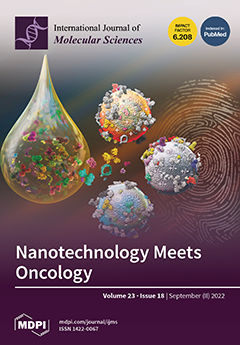Carotid atherosclerosis (CA) is an important risk factor for ischemic stroke. We described the miRNA and hemostasis profile of patients with moderate and advanced stages of carotid atherosclerosis and elucidated potential correlations with hemostatic activation. A prospective case-control study included 61 patients with evidence of carotid atherosclerosis (via ultrasound). The study population was divided into groups depending on the degree of carotid artery stenosis: 60% or more (advanced) and <60% (moderate). All patients underwent the following blood tests: general blood test, hemostatic parameters and microRNA. Extraction of microRNA was performed using Leukocyte RNA Purification Kit (NORGEN Biotec Corp., Thorold, ON, Canada); miRNA quantification was performed via RT-PCR. Statistical analysis was performed in R programming language (v. 4.1.0) using RSudio. MicroRNA expression profile was different depending on CA degree. MiR-33a-5p/3p levels were higher in patients with ≥60% carotid stenosis (42.70 and 42.45 versus 38.50 and 38.50, respectively,
p < 0.05). Almost complete separation can be visualized with the levels of miR-126-5p: 9.50 in the moderate CA group versus 5.25 in the advanced CA (
p < 0.001). MiR-29-5p was higher in the moderate CA group: 28.60 [25.50;33.05] than in advanced CA group: 25.75 [24.38;29.50] (
p = 0.086); miR-29-3p was also higher in the moderate CA group: 10.36 [8.60;14.99] than in advanced CA group: 8.46 [7.47;10.3] (
p = 0.001). By-group pairwise correlation analyses revealed at least three clusters with significant positive correlations in the moderate CA group: miR-29-3p with factors V and XII (r = 0.53 and r = 0.37, respectively,
p < 0.05); miR-21-5p with ADAMTS13, erythrocyte sedimentation rate and D-dimer (r = 0.42, r = 0.36 and r = 0.44, respectively,
p < 0.05); stenosis degree with miR-33a-5p/3p and factor VIII levels (r = 0.43 (both) and r = 0.62, respectively,
p < 0.05). Hemostasis parameters did not reveal significant changes in CA patients: the only statistically significant differences concerned factor VIII, plasminogen and (marginally significant) ADAMTS-13 and protein C. Down-regulation of miR-126-5p expression has been identified as a promising biomarker of advanced carotid atherosclerosis with high specificity and sensitivity. Correlation cluster analysis showed potential interplay between miRNAs and hemostatic activation in the setting of carotid atherosclerosis.
Full article






